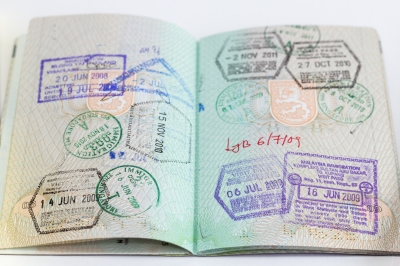
As an Italian-American it saddened me to read in The New York Times that Kansas State University in Manhattan, Kansas may be eliminating its Italian classes. Before I was an immigration attorney I studied Italian and obtained a master’s degree in Italian Studies from Brown University.
Even sadder was the cause: a sharp drop in the number of international students enrolling at the university, necessitating budget cutbacks.
Kansas State is not alone.
After a decade of rapid growth which saw the international student population increase 85 percent to over a million students, the number of newly arriving international students fell 3 percent in the 2016-2017 academic year.
Even before Donald Trump was elected president, competition from universities in Canada, Australia and Britain had begun chipping away at international enrollment at U.S. colleges. Other issues such as a currency crisis in India and decreasing international scholarships in Brazil and Saudi Arabia played a role as well.
Trump’s campaign rhetoric and subsequent action as President have contributed to substantial declines in international student enrollment for the current academic year. Across the country the number of new international students declined an average 7 percent according to a study of about 500 campuses by the Institute of International Education, with 45 percent of campuses reporting at least some decrease.
Midwest universities have been hit especially hard.
Kansas State had 159 fewer international students enrolled this fall. The international student population at the University of Central Missouri decreased over 1500 students since last year and is down to just 944. Wright State, near Dayton, Ohio, has seen its international student population fall by over 800 students in the past two years.
International students provide a source of much needed tuition income. Without this income, many schools are cutting programs or will be forced to do so soon.
While Kansas State is considering eliminating its Italian department, Wright State has cut Italian, Russian and Japanese as part of $30 million in budget reductions. It is also cutting its swim team this spring and reducing the French horn and tuba teaching positions to adjunct professor status.
In this contentious environment I encourage my university clients to be calm and take a breath.
One thing I have noticed about President Trump’s actions is that they have been very consistent with his campaign promises: border enforcement and bans. He wants to move to a merit-based immigration system similar to Canada and Australia.
In his desire to move things along in the absence of a comprehensive immigration policy, he has targeted three areas to restrict or eliminate immigration:
- Deferred Action for Childhood Arrivals (DACA);
- The diversity lottery, which allots 50,000 visas to random lottery winners from countries with “historically low rates of immigration to the United States” according to the State Department;
- Family-based immigration, which allots 75,000 visas for family members of those immigrants already in the United States to migrate (also called chain migration).
While it has gotten a little harder for international students to gain access to U.S. colleges, they are not the focus of Trump’s ire.
Moreover, if the U.S. does move to a merit-based immigration system, international students may gain an advantage.
A merit-based system is point-based and prizes highly educated immigrants. Who would be better positioned than those who gained a U.S. college education?
As colleges regroup to recruit internationally in this context, I recommend that they approach prospects with an eye toward the H-1B visa that international students will ultimately want to apply for. These are students who:
- Intend on a STEM major. Engineering majors are the safest bet.
- Plan to work in a STEM field or true specialty occupation. Qualifying occupations include doctors, lawyers, teachers and engineers.
Unfortunately, unless a student wants to teach a foreign language, liberal arts students are unlikely to qualify for an H-1B visa.
Colleges may even want to use the possible advantage of U.S. college education in a merit-based immigration system as a recruiting point.
I firmly believe U.S. colleges and universities can weather this intense immigration storm by staying calm and focusing their recruitment on the areas most likely to succeed with visas.
Please contact me if you would like more information or help with student visa applications.
